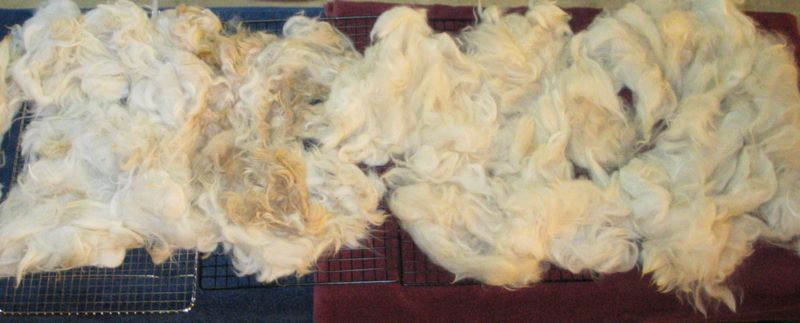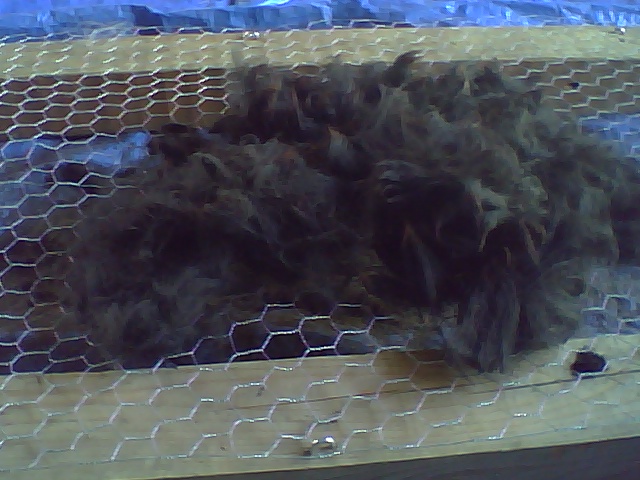Here’s how I wash my fiber.
1. Skirt 1 pound of fiber you plan on washing. Get rid of poop and large vegetable mater
2. Loosely put ¼ of a pound into a lingerie bag 15”x18” – If you over stuff the bag, the center of the fiber won’t get clean. Repeat for 3 other bags.
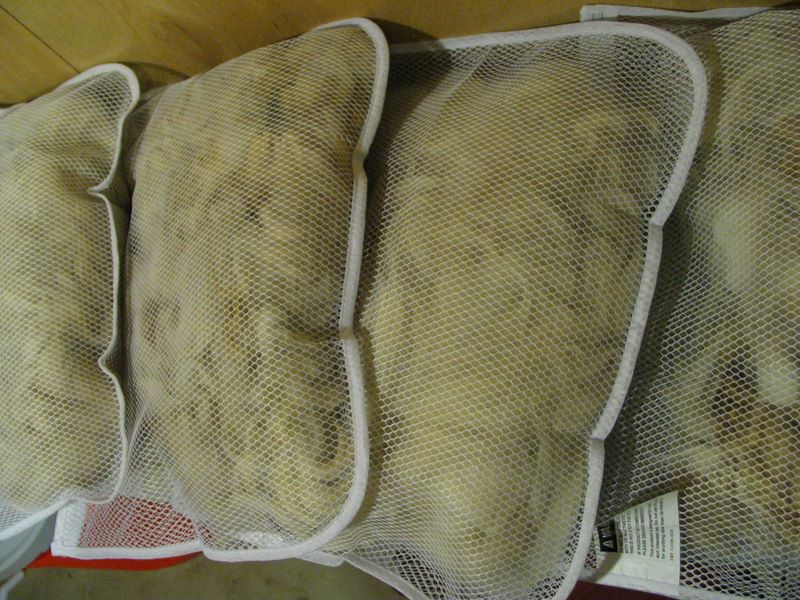
3. Fill up your washing machine with HOT water.
4. Once the machine is full add in 1 cup of Dawn Original Dish Soap. Stir the water to evenly mix in the soap but not so hard it makes suds. TURN OFF YOUR WASHER!!!
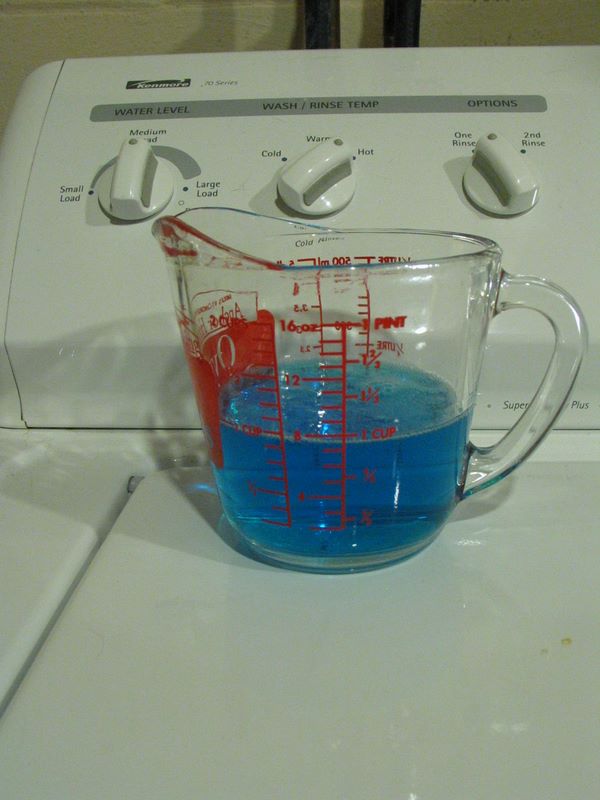
5. Place a bag into the water, use tongs to push the bag under 2-3 times until you see/feel the fiber loosen up in the bag and it is fully soaked. Repeat with your other 3 bags.
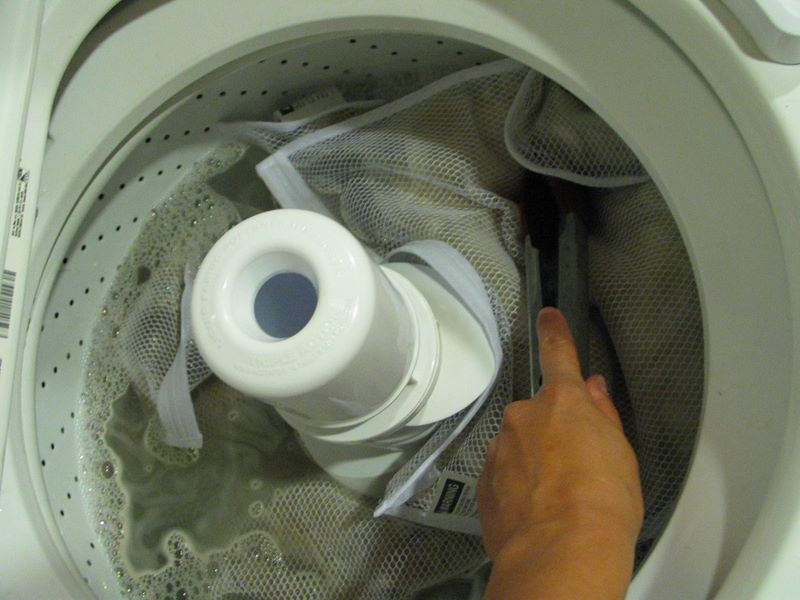
6. Yup, the water is already dirty, ewww. Make sure your washer is OFF and close the lid. Let your fiber soak for 30 minutes.
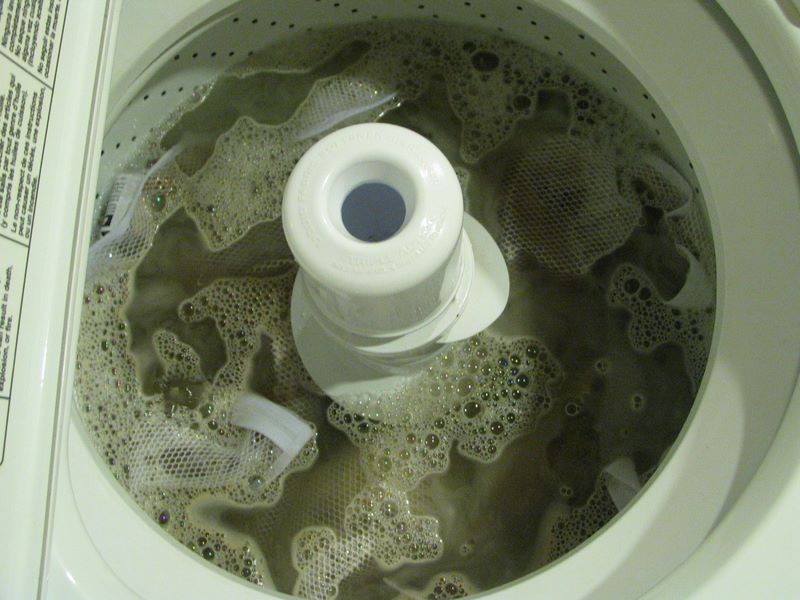
7. Remove the bags and let the water drain from them and set aside. Turn on your washer and have it drain the water out.
8. Fill your washer with WARM water this time and NO soap. TURN OFF WASHER when full.
9. Put in your first fiber bag into the warm water. I use my hands this time to submerge the bag and fluff up the fiber in it until it’s loose in the bag. Repeat for the 3 remaining bags
10. Let sit for 30 minutes
11. Repeat steps 7-9 until the rinse water is clear after 30 minutes.
12. When your rinse water is finally clear, remove the bags and let drain for the last time. Turn on the washer and drain the water again.
13. Place bags evenly in the empty washer.
14. Put your washer on the SPIN cycle and turn on so it will squeeze the rest of the water out of your fiber.
Drying Your Washed Fiber:
There are several ways to dry your fiber. It all depends on what you have available to you. I’ve seen some folks lay the fiber out on a chair on their deck and let Mother Nature do her work. Sweater racks also work well.
I accidentally found a great way for me to dry my fiber when Mother Nature wasn’t cooperating. Rain and high humidity makes for slow fiber drying. So I laid out my fiber on an old coffee table covered in towels in my basement. I don’t have a sweater rack have plenty of cookie racks so I used those to get a little lift so air could flow under the fiber. I placed the table next to the dehumidifier and by the next morning it was dry!
Now that you have clean fiber let’s see what you’ve done with it at Fiber Arts Friday’s!
